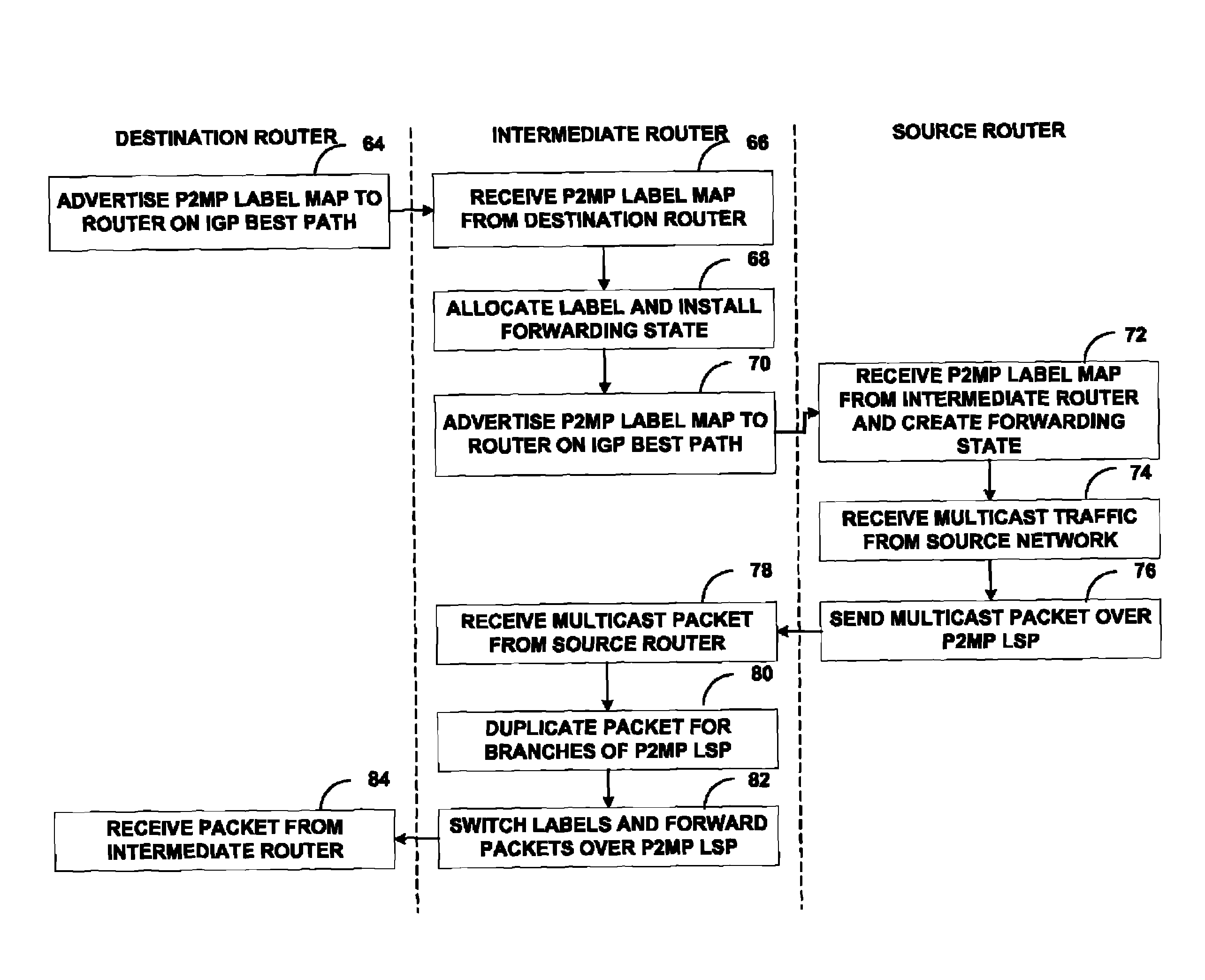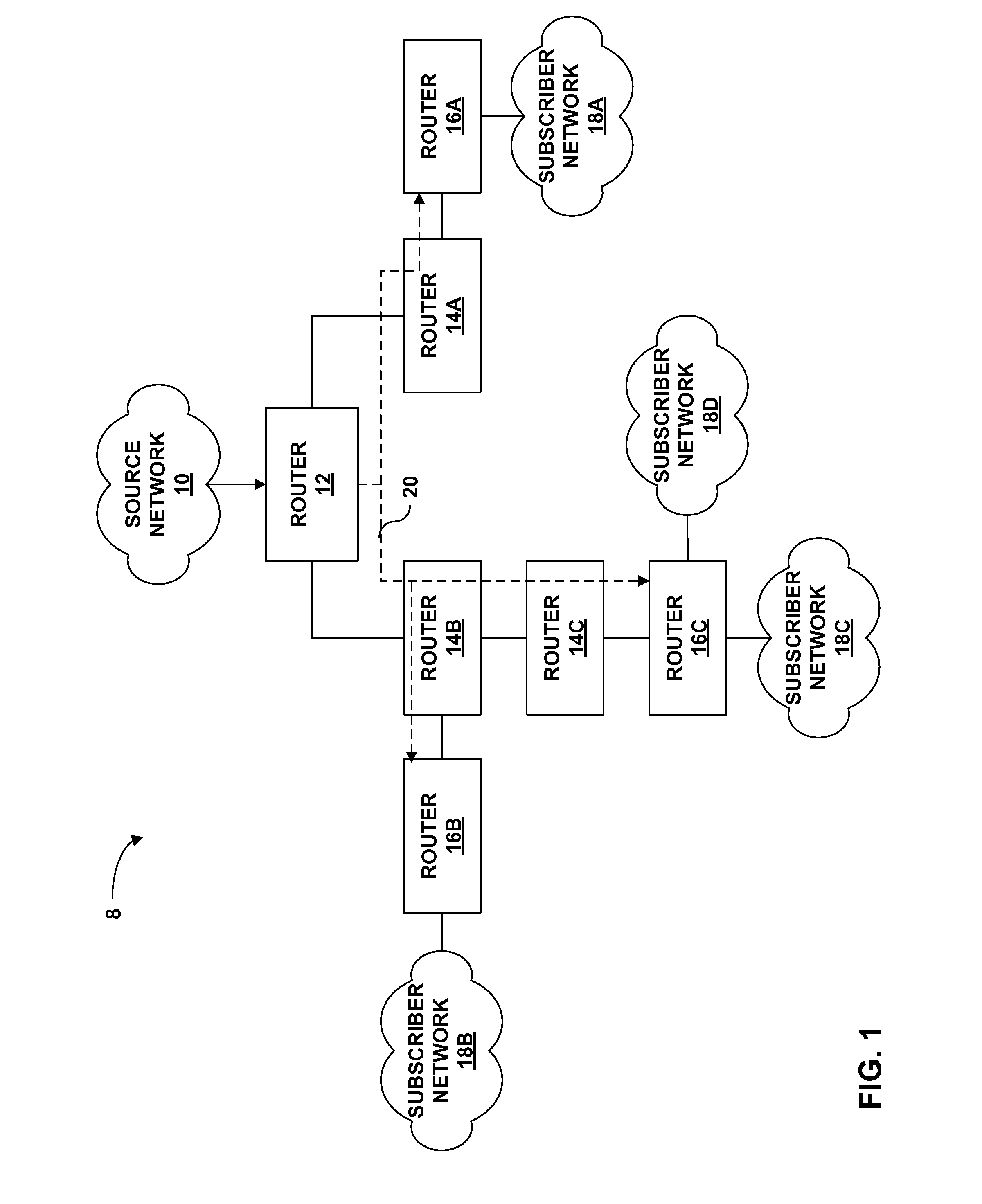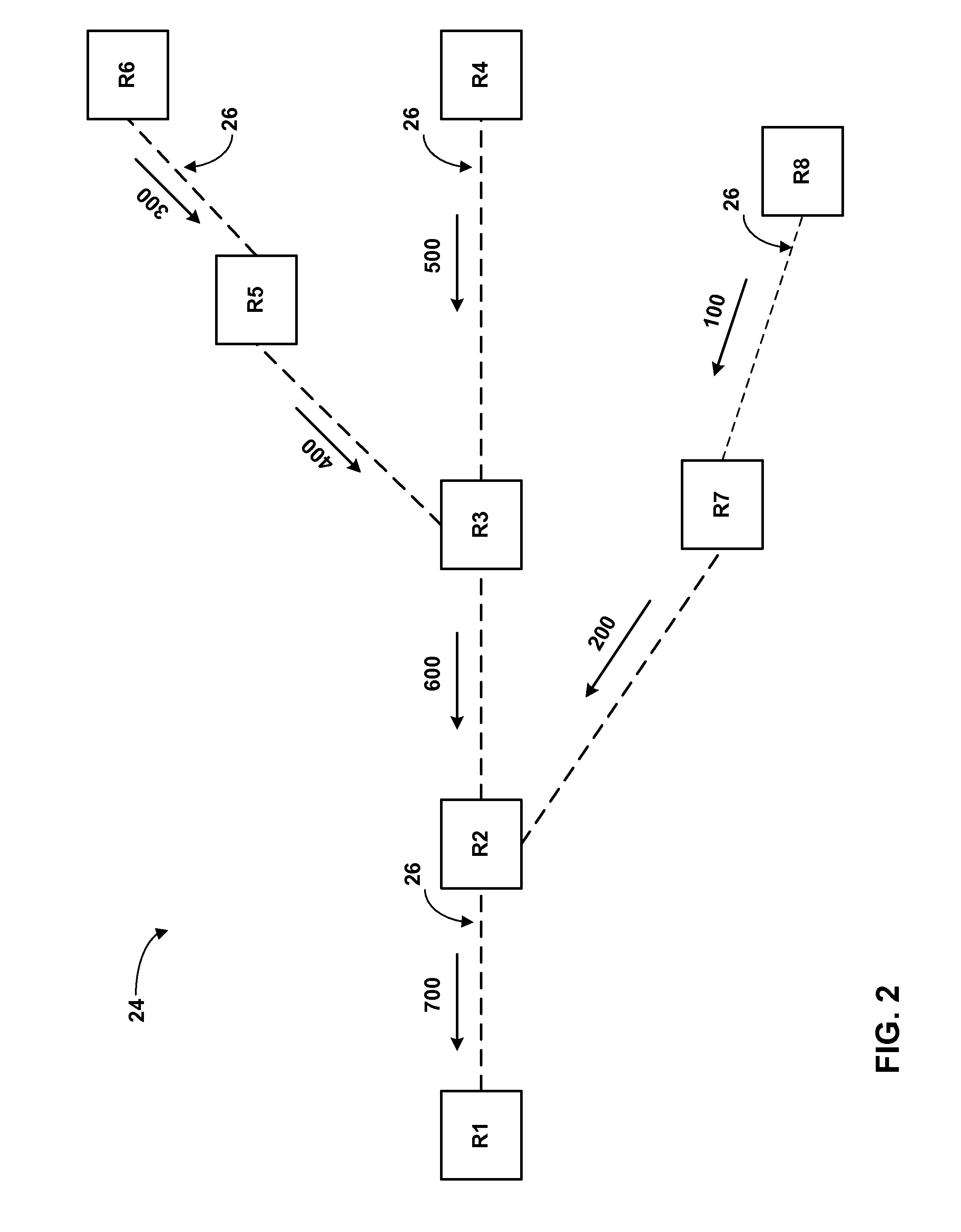Point to multi-point label switched paths with label distribution protocol
a label distribution and multi-point technology, applied in the field of computer network multi-cast traffic transmission, can solve the problems of rsvp scaling difficulty in service provider network, impracticality of deploying a second label distribution protocol to set up p2mp lsps,
- Summary
- Abstract
- Description
- Claims
- Application Information
AI Technical Summary
Benefits of technology
Problems solved by technology
Method used
Image
Examples
Embodiment Construction
FIG. 1 is a block diagram illustrating an exemplary computer network 8 having a point to multi-point (P2MP) label switched path (LSP). Computer network 8 utilizes a protocol that has been extended to allow the protocol to establish the P2MP LSP. In this example, network 8 includes a P2MP LSP 20 established between a source router 12 (also referred to as a source network device) and destination routers 16A-16C (“routers 16”) (also referred to as destination network devices). In the example of FIG. 1, router 12 uses a protocol such as the label distribution protocol (LDP) that has been extended to establish P2MP LSP 20 to carry traffic between source network 10 and subscriber networks 18.
Source network 10 may comprise any public or private network or the Internet. As shown in FIG. 1, system 10 includes subscriber networks 18. Subscriber networks 18 may include local area networks (LANs) or wide area networks (WANs) that comprise a plurality of subscriber devices. The subscriber device...
PUM
 Login to View More
Login to View More Abstract
Description
Claims
Application Information
 Login to View More
Login to View More - R&D
- Intellectual Property
- Life Sciences
- Materials
- Tech Scout
- Unparalleled Data Quality
- Higher Quality Content
- 60% Fewer Hallucinations
Browse by: Latest US Patents, China's latest patents, Technical Efficacy Thesaurus, Application Domain, Technology Topic, Popular Technical Reports.
© 2025 PatSnap. All rights reserved.Legal|Privacy policy|Modern Slavery Act Transparency Statement|Sitemap|About US| Contact US: help@patsnap.com



